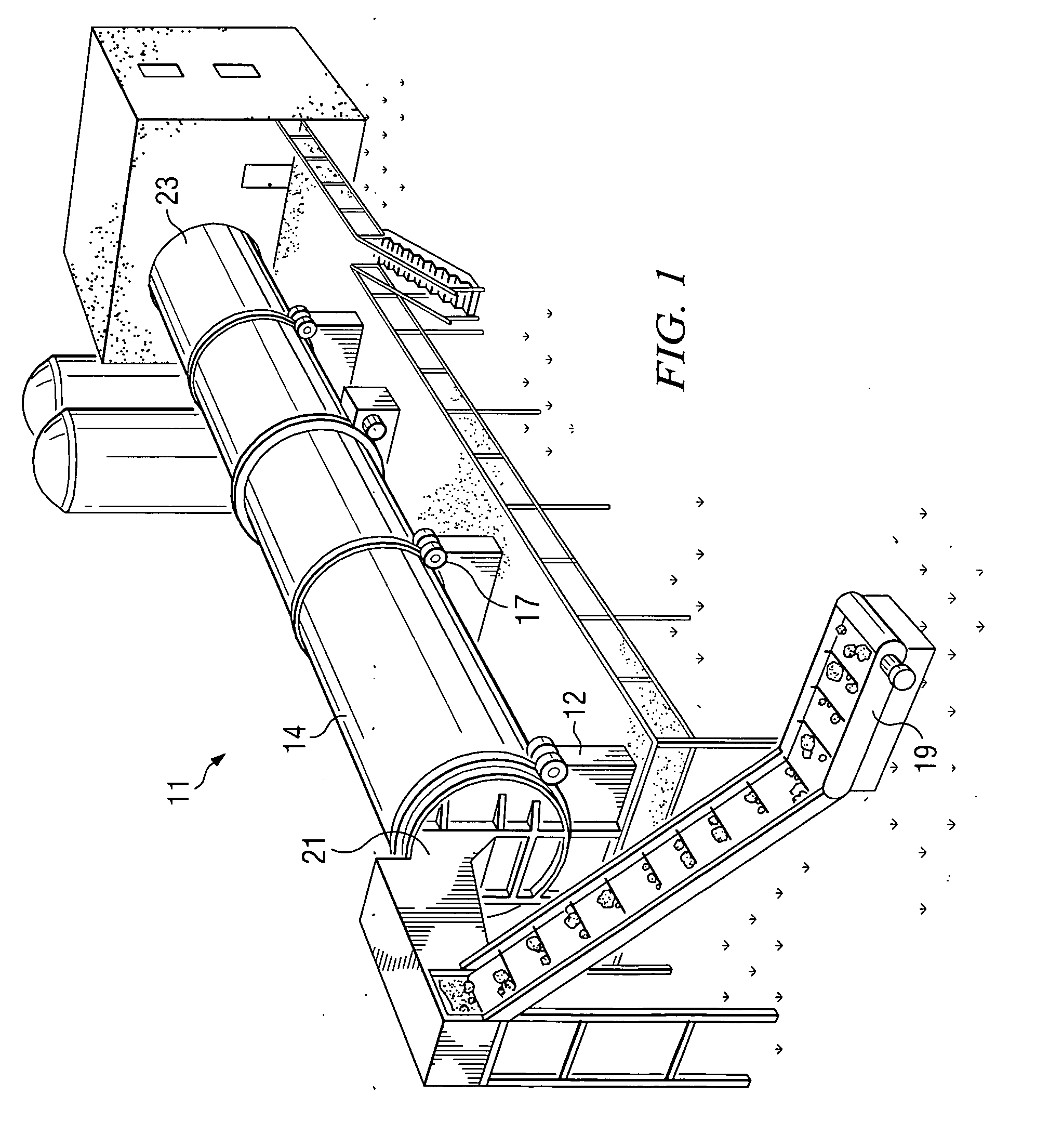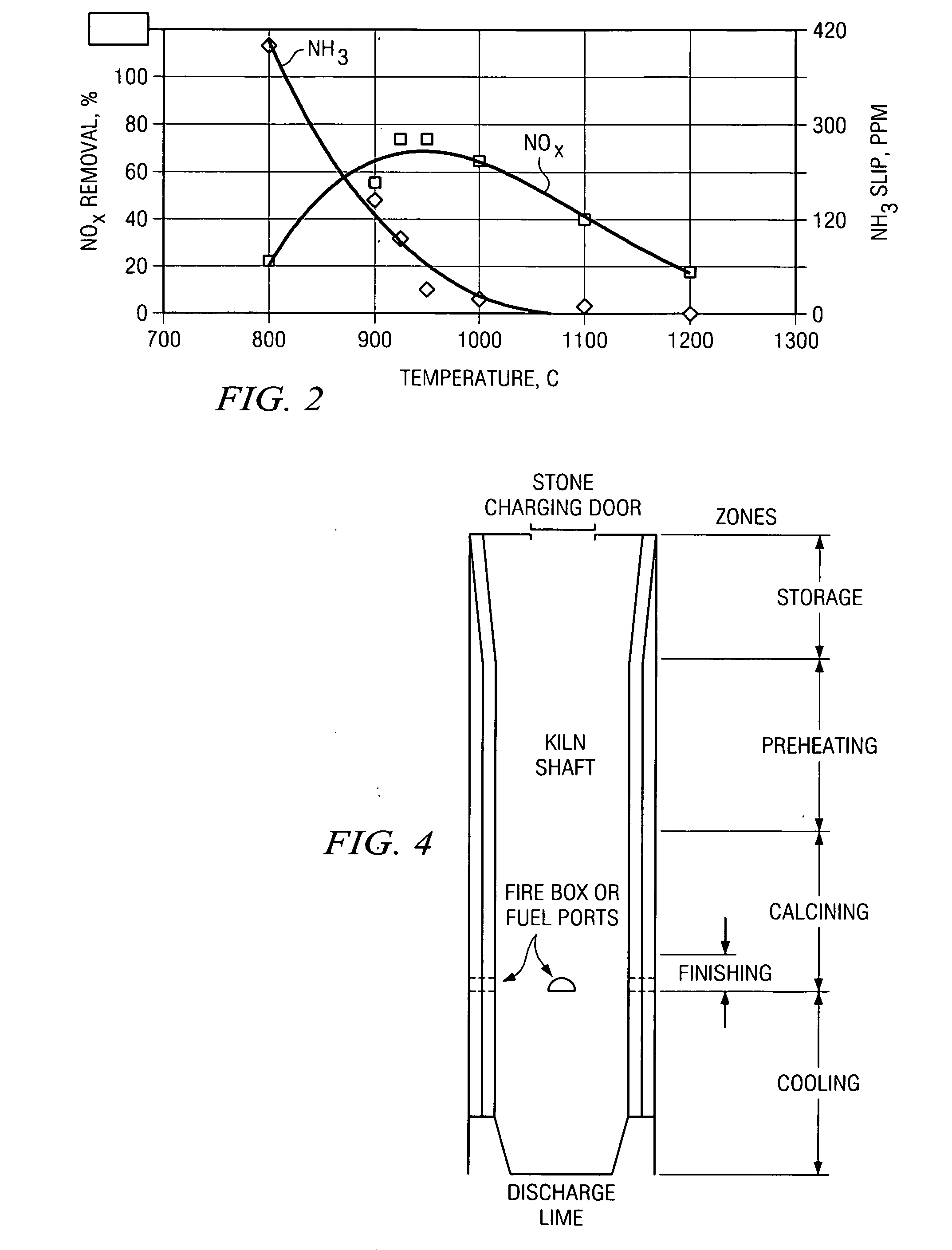Method of improving NOx emissions control in rotary preheater mineral kilns
- Summary
- Abstract
- Description
- Claims
- Application Information
AI Technical Summary
Benefits of technology
Problems solved by technology
Method used
Image
Examples
Embodiment Construction
[0027]FIG. 1 shows a traditional straight rotary lime kiln, designated generally as 11. Conventional rotary kilns of the type shown typically have a diameter to length ratio of about 1:30-40 with lengths of 75-500 feet and diameters of 4-11 feet being typical. See Boynton, “Chemistry and Technology of Lime and Limestone”, Wiley-Interscience, 2 Ed., pages 254-255. Such kilns are installed at a slight incline, generally about 3-5 degrees, as on foundation piers 12, allowing the kiln to rotate on trunnions 17 at each pier. The rotation speed of the kiln is adjustable through the use of, e.g., with variable speed drives, with the typical kiln revolving at a rate of about35-80 revolutions per hour.
[0028]Kilns are typically lined with about 6 to 10 inches of refractory brick, plus some insulation and are encased in a shell 14 of heavy steel boiler plate that has been welded in sections. Limestone is charged into the kiln at the elevated, inlet end 21 from a storage silo or conveyor feed a...
PUM
| Property | Measurement | Unit |
|---|---|---|
| Temperature | aaaaa | aaaaa |
| Temperature | aaaaa | aaaaa |
| Temperature | aaaaa | aaaaa |
Abstract
Description
Claims
Application Information
 Login to View More
Login to View More - R&D
- Intellectual Property
- Life Sciences
- Materials
- Tech Scout
- Unparalleled Data Quality
- Higher Quality Content
- 60% Fewer Hallucinations
Browse by: Latest US Patents, China's latest patents, Technical Efficacy Thesaurus, Application Domain, Technology Topic, Popular Technical Reports.
© 2025 PatSnap. All rights reserved.Legal|Privacy policy|Modern Slavery Act Transparency Statement|Sitemap|About US| Contact US: help@patsnap.com



